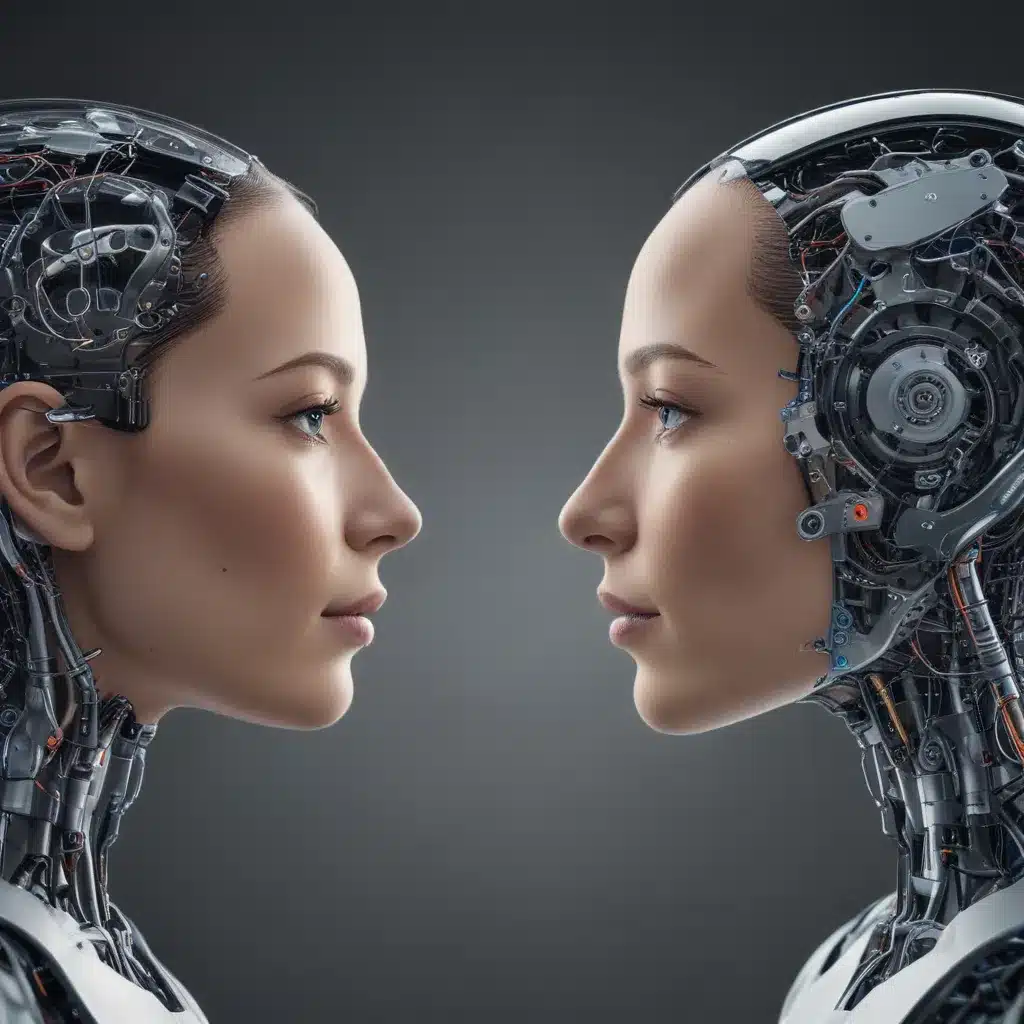
The Rise of Artificial Intelligence: Embracing the Potential
I have witnessed the remarkable advancements in artificial intelligence (AI) with a mixture of awe and curiosity. As the field of AI continues to evolve at a rapid pace, I find myself captivated by the boundless possibilities it presents. The ability of machines to analyze vast amounts of data, recognize patterns, and make decisions with remarkable precision has profoundly transformed numerous industries, from healthcare to finance to transportation.
However, the true power of AI lies not in its ability to replace human intelligence, but in its capacity to complement and enhance it. I believe that the future of AI lies in its seamless integration with human expertise, creating a synergistic relationship that unlocks new frontiers of innovation and problem-solving.
Harnessing the Strengths of AI and Humans
When I consider the strengths of AI, I am struck by its unparalleled computational power and its ability to process information at lightning speed. AI systems can sift through massive datasets, identify trends, and make predictions with a level of accuracy that far surpasses human capabilities. This makes AI an invaluable tool in fields such as medical diagnostics, financial forecasting, and scientific research, where the ability to rapidly analyze and interpret large data sets is crucial.
On the other hand, human intelligence shines in its creativity, contextual understanding, and emotional intelligence. Humans possess the unique ability to think outside the box, to draw upon their life experiences and intuition to generate novel solutions, and to navigate complex social and ethical landscapes. These qualities are essential in areas such as strategic decision-making, design, and human-centric problem-solving.
By combining the strengths of AI and human intelligence, we can create a powerful synergy that transcends the limitations of either alone. I envision a future where AI systems serve as tireless assistants, augmenting and empowering human professionals to achieve greater heights of productivity, innovation, and problem-solving.
Fostering Meaningful AI-Human Collaboration
To realize the full potential of AI-human collaboration, I believe it is essential to cultivate a culture of trust, transparency, and mutual understanding. AI systems must be designed with safeguards and clear communication channels to ensure that human operators can understand their decision-making processes and maintain control over critical decisions.
Moreover, I recognize the importance of ongoing training and education to bridge the gap between AI and human users. By equipping professionals with the knowledge and skills to effectively collaborate with AI systems, we can unlock new avenues for innovation and problem-solving.
Overcoming Challenges and Addressing Ethical Concerns
As with any transformative technology, the integration of AI into our lives and workplaces has raised valid concerns about the ethical implications of its use. Questions around data privacy, algorithmic bias, and the potential displacement of human jobs are just a few of the issues that must be thoughtfully addressed.
I firmly believe that mitigating these challenges requires a collaborative, multidisciplinary approach involving policymakers, industry leaders, and AI experts. By establishing clear guidelines, ethical frameworks, and robust regulatory safeguards, we can ensure that the development and deployment of AI technology aligns with the values and well-being of society.
Embracing the Future: A Vision for AI-Human Collaboration
As I look to the future, I am filled with a sense of excitement and optimism about the possibilities that lie ahead. I envision a world where AI and human intelligence work in seamless harmony, unlocking new frontiers of discovery, innovation, and problem-solving.
In healthcare, I can imagine AI systems assisting medical professionals in diagnosing and treating complex conditions, freeing up time for more personalized patient care. In manufacturing, AI-powered robotic systems could work alongside human workers, enhancing production efficiency and improving workplace safety.
In the realm of scientific research, I foresee AI being employed to rapidly analyze vast data sets, formulate hypotheses, and accelerate the pace of scientific breakthroughs. And in the creative arts, I can envision AI tools empowering human artists and designers to push the boundaries of their craft, while still preserving the unique touch and vision that only humans can bring.
By embracing the power of AI-human collaboration, I believe we can create a future that is more prosperous, equitable, and sustainable for all. It is a future where the complementary strengths of artificial and human intelligence work in tandem to solve the world’s most pressing challenges, unlocking new realms of possibility and ushering in a new era of human potential.
Conclusion: A Call to Action
As we stand on the cusp of this transformative future, I invite you to join me in this journey of AI-human collaboration. Together, we can navigate the complexities, address the challenges, and harness the immense potential that lies before us.
I encourage you to approach this collaboration with an open mind, a willingness to learn, and a commitment to ethical, responsible development of AI technology. By working side-by-side with AI systems, we can redefine the boundaries of what is possible, and create a brighter, more innovative tomorrow.
Let us embark on this endeavor with a shared sense of purpose, a collaborative spirit, and a deep conviction that, together, we are stronger. The future of AI-human collaboration is ours to shape, and the possibilities are limitless.












